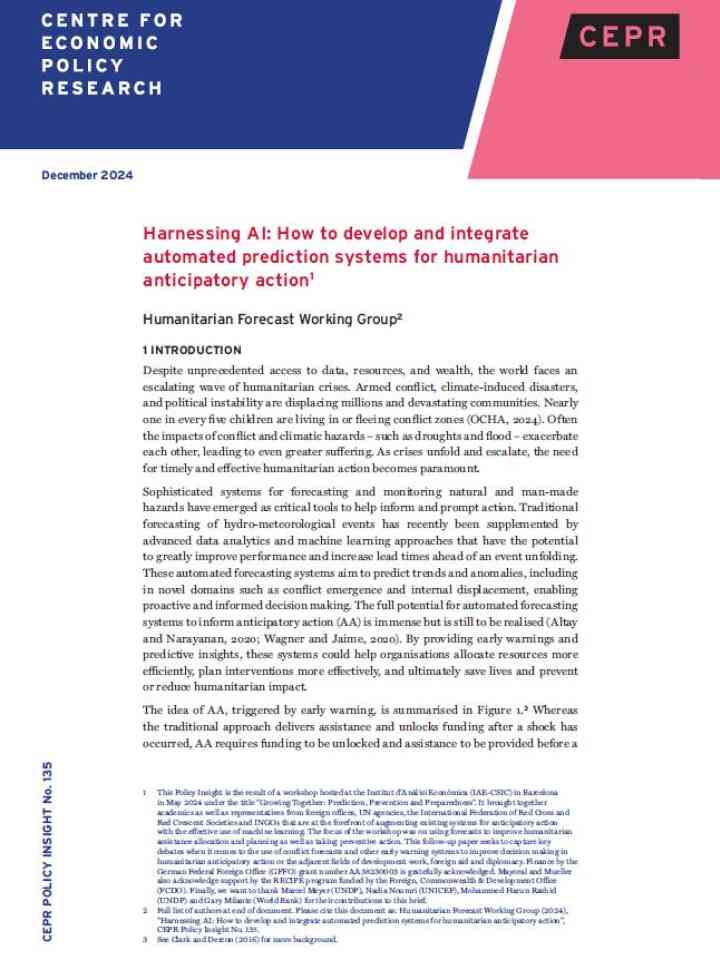Harnessing AI: How to develop and integrate automated prediction systems for humanitarian anticipatory action
This Policy Insight provides an account of the significant technical, ethical, and organisational difficulties involved in sophisticated systems used for forecasting and monitoring natural and man-made hazards, and the current solutions in place. Armed conflict, climate-induced disasters, and political instability are displacing millions and devastating communities.
Nearly one in every five children are living in or fleeing conflict zones (OCHA, 2024). Often the impacts of conflict and climatic hazards – such as droughts and flood – exacerbate each other, leading to even greater suffering. As crises unfold and escalate, the need for timely and effective humanitarian action becomes paramount.
The full potential for the use of such automated forecasting systems to inform anticipatory action (AA) is immense but is still to be realised. By providing early warnings and predictive insights, these systems could help organisations allocate resources more efficiently, plan interventions more effectively, and ultimately save lives and prevent or reduce humanitarian impact.
Explore further
